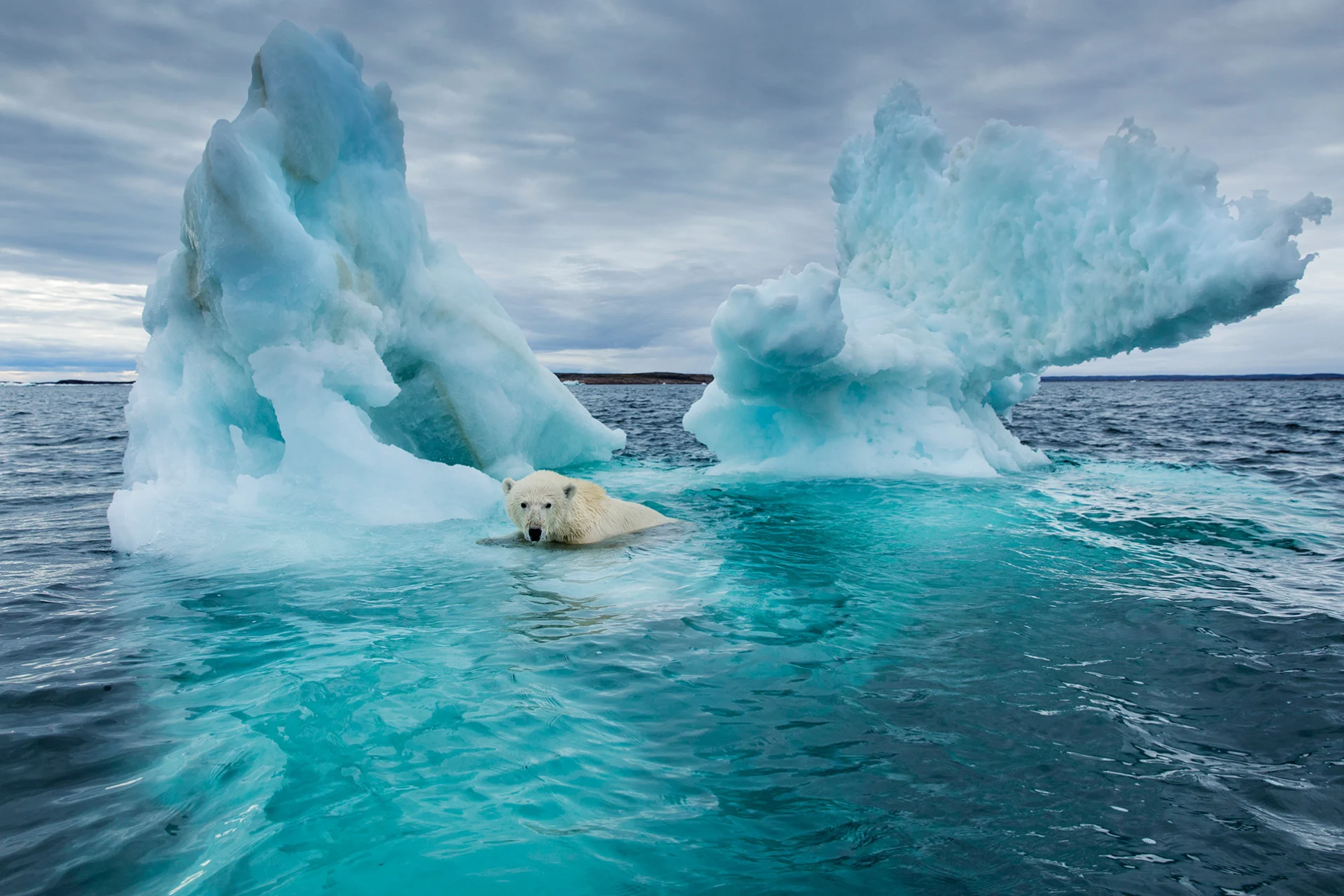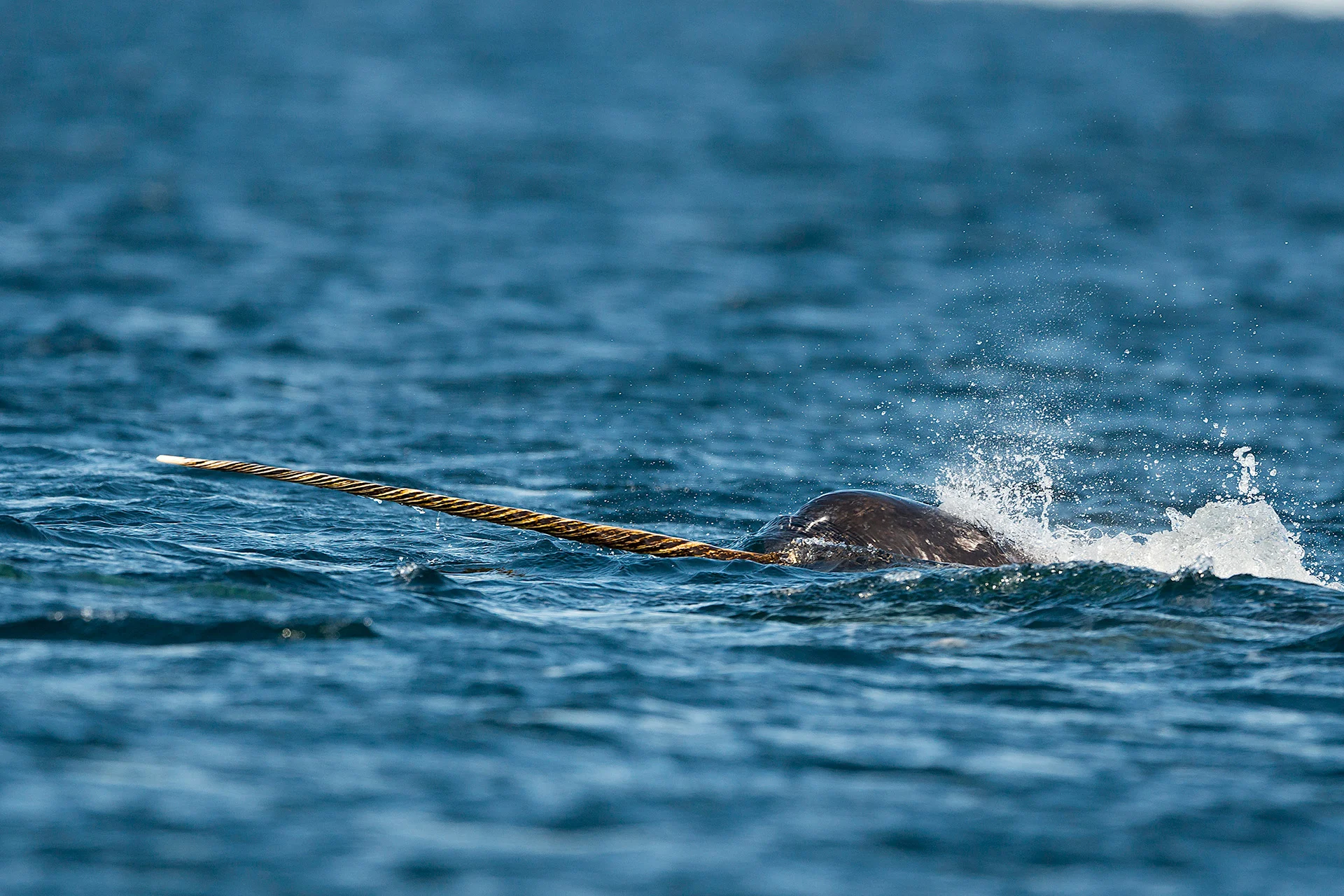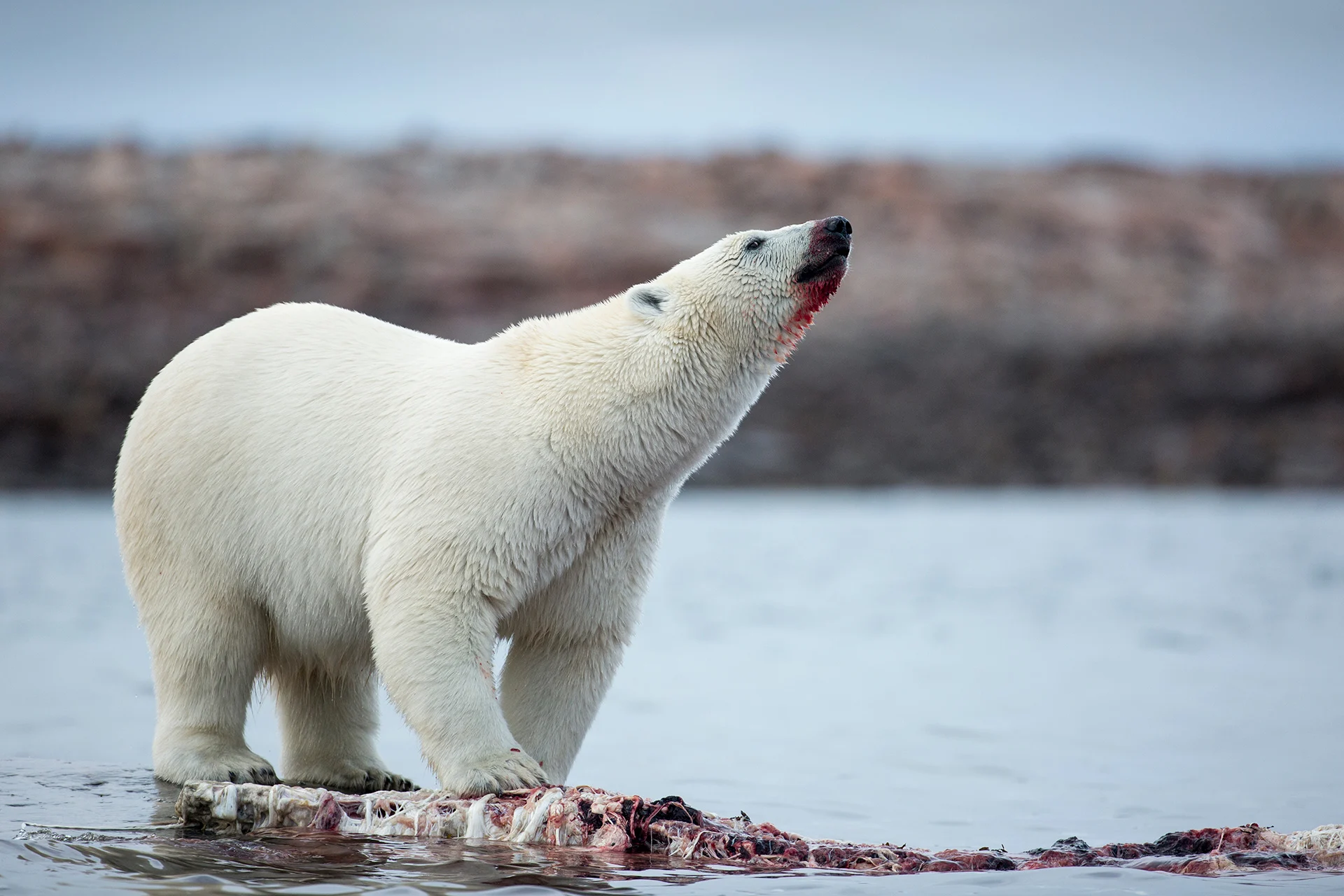
Polar bears, narwhals using up to 400% more energy to survive in the Arctic
The Arctic is warming faster than anywhere else on Earth, which is making it harder for polar bears and narwhals to hunt
Polar bears and narwhals are using up to 400 per cent more energy to survive as the Arctic Ocean rapidly loses its ice cover, reports a study published in Journal of Experimental Biology.
Climate change is heating up the Arctic faster than anywhere else. In just the last decade, the region warmed an incredible 0.75°C. It took over 100 years for the Earth as a whole to warm that much. This rapid heating is causing the sea ice area to shrink 13.3 per cent per decade, making it harder for ice-dependent species like polar bears and narwhals to survive.
The Arctic is a difficult place to survive at the best of times. Arctic mammals — including polar bears and narwhals — evolved to conserve their energy. Polar bears minimize their energy consumption by sitting for hours beside seal breathing holes to catch them. Narwhals are like stealthy submarines, using long, slow-energy conserving dives to catch fish deep under the ice.
Now, because of the extensive loss of ice cover in summer and winter, they are having to work much harder to stay alive.
HUNTING BELOW THE ARCTIC ICE
The cold, dark Arctic winter is the season to feast for both polar bears and narwhals that catch the majority of their food in those few months. Narwhals are endurance swimmers and yet remarkable divers, plunging 1,500 meters deep while holding their breath for up to 20 minutes.

Credit: wildestanimal. Moment. Getty Images.
Narwhals’ main prey, Greenland halibut and Arctic cod, are often found under the ice. Diving under the ice is a risky strategy for any air-breathing mammal.
Knowing the locations of breathing holes is a matter of life or death. But what happens when climate change makes the breathing hole locations and stability less predictable?
“[It’s] led to the mammals becoming trapped beneath the ice,” say co-authors Anthony Pagano from the Conservation Institute at San Diego Zoo Global and Terrie Williams of the University of California, Santa Cruz.
Killer whales are also now showing up in the increasingly ice-free Arctic and hunting the much slower narwhals, and particularly their young.
Narwhals are also extremely sensitive to underwater sounds and the growing noise from cargo and other ships now entering the Arctic poses another threat. Narwhals will consume 300 per cent more energy in their dives while fleeing the noise source. This energy expenditure is “not sustainable and requires prolonged recovery periods” write Pagano and Williams.
During these recovery periods narwhals are unable to hunt, further depleting their stores of energy. This dangerous cycle of expending more and more energy to survive is also at play for the Arctic’s other iconic species.

Credit: Paul Souders. Stone. Getty Images.
HUNTING ON THE ARCTIC ICE
Polar bears are solitary hunters, twice as large a tiger but uniquely vulnerable in their almost total reliance on one prey species. Despite sitting around most of time, polar bears are high-energy beasts, burning through 12,325 calories a day. That’s why their essential food source are calorie-loaded seals.
Polar bears are too slow to catch seals in the water so they patiently wait on the ice for a seal to pop its head out of a cone-shaped breathing hole. When a seal surfaces to breathe the bear stands on its hind legs and smacks the seal on the head with both of its front paws to stun it. Then the bear bites it on the neck and drags it onto the ice.
Less sea ice means the bears have to travel further, often having to swim long distances to find ice and seals. In 2012 a female bear with a radio tracking collar swam an incredible 462 km over 10 days in the Beaufort sea. Polar bears are not efficient swimmers, burning four to five times as much energy compared to walking. To recover from that 10 day swim, that female would need to find, catch and eat another 3.4 ringed seals on top of her normal one seal per 10-day diet, the researchers estimate.
Less ice also means longer times on land with ice forming weeks later in the winter and breaking up sooner in the spring. As this ice-free season gets longer — which is also a seal-free season — bears are at risk of starvation since the food resources on land are meagre. Like all bears, polar bears will eat just about anything. However, it takes a lot of anything to replace a seal. In fact it takes “approximately 1.5 caribou, 37 Arctic char, 74 snow geese, 216 snow goose eggs or 3 million crowberries” to get the same number of calories as eating one adult seal,” the researchers calculated.
“There just aren’t enough calories on land for polar bears,” agrees Andrew Derocher, a polar bear biologist at the University of Alberta. However, Derocher told The Weather Network that he hasn’t seen extensive swimming by polar bears in the Hudson Bay region where he works. Ice conditions there have largely been stable in recent years.
“I think the 300 to 400 per cent increase in energy expenditure applies mainly to bears in the Beaufort sea where there has been the biggest sea ice loss,” he said.
There are 22,000 to 31,000 polar bears in 19 different populations scattered around the Arctic. That means there are 19 different scenarios, some populations are stable, others like the Beaufort are declining.
The Pagano and Williams’ paper is a nice synthesis of studies, said Derocher who wasn’t involved. It shows that “the evidence is all pointing the same way” and confirms that climate change is making it increasingly more difficult for polar bears and narwhals to survive.
Thumbnail credit: Paul Souders. Stone. Getty Images.











